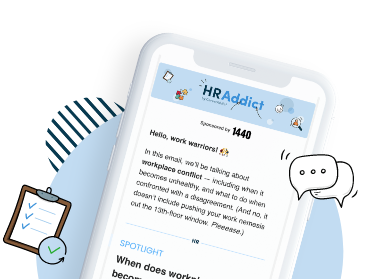Ask any working professional, whether they’re in tech, sales or media, if they would like to work one day less a week, and they’ll instantly light up and happily say “yes, please”!
But is a four-day workweek really worth it from a business perspective? Should you seriously consider implementing a compressed work schedule for your staff?
In this guide, we’ll explore the pros and cons of four-day workweeks and — among other things — the fascinating results reported by government and company trials around the world. And at the end, you’ll be armed with the insights you need to make an informed decision.
What is a four-day workweek?
A four-day workweek is a shortened version of the traditional five-day workweek.
This arrangement generally involves decreasing employees’ work schedules to 32 hours over 4 days — without loss of pay or perks and benefits. But it might alternatively involve distributing their normal 40 hours to four 10-hour workdays, which is better known as a compressed work schedule or a 4/10 workweek, and is the most common variation.
In both cases, employees are given three days off, instead of the customary two. These are typically consecutive, with Friday becoming a permanent non-working day, but the third day off may be added to the middle of week (usually a Wednesday). Some companies, meanwhile, may split the day off among staff, with half taking Friday off and the other half Monday.
How has the four-day workweek been trialed?
The four-day workweek isn’t a new concept, and has been around since as early as 2008 when the Utah state government implemented a compressed work schedule in a bid to reduce energy costs and commuters’ gas expenses.
Although Utah’s experiment was short-lived (it was ultimately vetoed by the Utah State Legislature), other governments and even companies have implemented similar work arrangements to varying degrees of success.
In Iceland, for example, working hours were reduced to 35 or 36 hours a week without pay reduction for 2,500 government employees in two separate trials. This resulted in, among other things, improved health and work–life balance, decreased stress levels and burnout, while overall productivity improved or remained the same. It was hailed as a resounding success: by 2021, 86% of Iceland’s entire working population had moved to working shorter hours.
In the summer of 2019, meanwhile, Microsoft Japan conducted a four-day workweek trial, again without pay reduction. At the end of the trial, the company reported a 23% reduction in electricity costs and a 40% increase in productivity.
How does the four-day workweek affect holiday entitlement?
Generally speaking, a four-day workweek doesn’t affect employees’ holiday entitlement, particularly those on a compressed work schedule.
For example, if your company currently offers employees 25 days of holiday leave, they would still have the same entitlement if they begin working four 10-hour days — as their weekly hours remain unchanged, so too does their holiday entitlement.
However, holiday entitlement can be reduced proportionally if a company offers a four-day workweek without extending the working day across the week.
For example, if an employee works a total of 32 instead of 40 hours a week, they might receive 80% of their usual holiday entitlement (eg: 20 instead of 25 paid leave days). That said, most companies prefer to maintain their employees’ original holiday entitlement, even if their total weekly hours are decreased.
The pros of a four-day workweek
Based on the results of the various trials already conducted, we know that a four-day workweek can be successful. But let’s look at the different advantages it brings in a little more detail:
1. Talent attraction and retention
The modern worker doesn’t only care about their salary and job title. They also care about the perks and benefits they’re offered, like remote or hybrid work opportunities and, yes, shorter workweeks.
When you offer a four-day workweek, you ultimately gain a competitive advantage over other employers in attracting new talent. Even your existing talent will be more inclined to remain with your company, which decreases turnover exponentially.
2. Increased productivity
As evidenced by the many four-day workweek trials already conducted, including the few case studies we explored, a compressed work schedule can increase employees’ overall productivity.
And this is good for business — in more way than one. Indeed, it leads to better customer service, which itself leads to increased customer loyalty and profit margins. It also enhances your company’s reputation and creates a positive work environment.
3. Cost savings
One thing that all companies share in common is their goal to make money — and also save money. And a four-day workweek has the potential to achieve both, especially the latter.
In fact, reducing workers’ hours can save on operational costs, from energy and utilities to office supplies — and even employee perks and benefits (for example, if your company offers free daily lunches, that’s potentially one less lunch you need to pay for).
4. Improved employee wellbeing
As evidenced by the countless trials and current applications of the four-day workweek, the workers involved report feeling less stressed and a better sense of work–life balance.
Indeed, the reduced hours give employees more time to unwind, pursue hobbies and interests, connect with family and friends, attend medical appointments, run errands, and even complete house chores.
As a result, they enjoy higher job satisfaction and better mental health — which decreases absenteeism and, again, turnover.
5. Sustainability
Another of the many advantages that four-day workweeks bring is that they (even indirectly) make you a more ecofriendly company and help you promote sustainability in the workplace.
Indeed, you ultimately reduce your company’s carbon footprint: one less day in the office means less electricity — and less commuting. This is great if you’ve established sustainability goals or corporate responsibility initiatives.
The cons of a four-day workweek
Four-day workweeks aren’t all kittens and rainbows; they have their downsides, too. In fact, some disadvantages include:
1. Implementation costs and adjustment
If you choose to transition to a four-day workweek, it won’t happen with a simple switch of a (figurative) button. Indeed, there’s a lot to consider — and do.
Indeed, you’ll need to rethink workflows, update employment contracts, invest in tools to maintain productivity during the shift, and even retrain employees on new software and processes, among other things.
All of this will be time-consuming and costly, at least in the short term.
2. Operational challenges
While a four-day workweek may sound ideal for both employees and employers alike, it doesn’t work for every company and it can pose very real operational challenges.
For example, if your company operates within an industry that requires 24/7 service (like tech support) or is predominantly customer-facing, then implementing this work model might prove difficult.
Indeed, it will require creative scheduling or a rotation system to cover all hours to ensure customer service levels aren’t affected. It might even necessitate the employment of additional staff, which just might make the entire transition a futile endeavor.
3. Reduced availability
Implementing a four-day workweek, where you give employees a third day off in the week, means that there won’t be anyone around to actually work. And this, in turn, means that the business will need to close on that extra day off. In other words: you reduce your availability.
And that can result in lost business opportunities. For example, let’s say you run a small advertising agency that now closes on Fridays — potential clients who can’t get a hold of you will likely find another agency to do business with.
There is a workaround for this, though, and that involves splitting the day off between staff on different days, thereby ensuring business operations run as normal as possible.
4. Compressed workload
If you’re considering the fixed work schedule variation of the four-day workweek in particular (ie: decreasing workers’ schedules to 32 hours a week), employees will likely have to pack more work into each day.
And they will certainly feel the impact of this. Indeed, if not carefully planned for and managed well, compressing their hours without adjusting their workloads can inevitably lead to burnout, higher stress levels and decreased productivity in the long run.
In time, this can harm your overall talent retention efforts.
5. Impact on team collaboration
One of the biggest disadvantages of four-day workweeks, especially when the third day off is split between two or more groups of employees, is the potential impact it has on team collaboration.
Indeed, when there are fewer overlap days between team members, collaboration and communication may take a significant hit. And this can consequently delay or otherwise hinder the progress or completion of a project, as one employee will need to wait one extra day to hear back from their coworker on what could potentially be an urgent matter.
How to decide if a four-day workweek is right for your company
If you’re considering making the switch to a four-day workweek, you’ll first need to conduct a careful and very thorough analysis of your current business model — and even conduct employee surveys — to determine whether it’s really feasible and worthwhile.
Asking yourself the following questions will, ultimately, help you make an informed decision:
- Does my company require 24/7 customer or client interaction?
- Do clients expect the company to be available five days a week?
- Are there any particular days or seasons when demand is higher?
- Are there inefficiencies or wasted time during the traditional five-day workweek?
- Do employees feel overworked or struggle with work–life balance?
- Would a shorter week decrease or increase costs?
FAQs about four-day workweeks
Still got questions about the four-day workweek? You might find the answers here:
Q: Can I legally implement a four-day workweek?
Yes, but you will need to consult labor and union law before making the switch to ensure you don’t unwittingly open your company to potential legal issues. You will also need to adjust employment contracts to reflect the changes in work schedules.
Q: Why should I pay employees the same amount for working less?
As proven by the various four-day workweek trials conducted around the world, companies and organizations who have introduced the four-day workweek method generally enjoy higher productivity and higher returns. When you decrease employees’ hours and pay, on the other hand, you can expect their productivity and output to falter.
Q: Should I roll out the four-day workweek in stages?
This depends on your business’ capabilities, as well as its implementation plans and long-term goals. For some companies, a phased rollout may be more beneficial than a big-bang rollout, but phased rollouts are generally costlier given the extended timeline.
Key takeaways
If you choose to make the switch to a four-day workweek, it’s a good idea to first start with a pilot program for at least a few months to better gauge its effectiveness regarding things like productivity levels, absenteeism rates and employee engagement.
To sum up, here’s what we learned in this guide:
- A four-day workweek is a shortened version of the traditional five-day workweek. It generally involves working 32 hours a week without pay reduction, but it might mean distributing workers’ standard 40 hours across four days.
- Many governments and private companies have trialed the four-day workweek with largely positive results, including the Reykjavik City Council, Microsoft Japan and the Utah state government.
- Implementing a four-day workweek doesn’t generally affect employees’ holiday entitlement, although employers can reduce paid leave benefits proportionally if the total number of employee hours is reduced.
- It brings many advantages, including talent retention, increased productivity and cost savings. It also has several disadvantages, such as operational challenges, compressed workloads and implementation costs.
What’s your take on the four-day workweek? Are you for or against it? Let us know in the comments section below.

